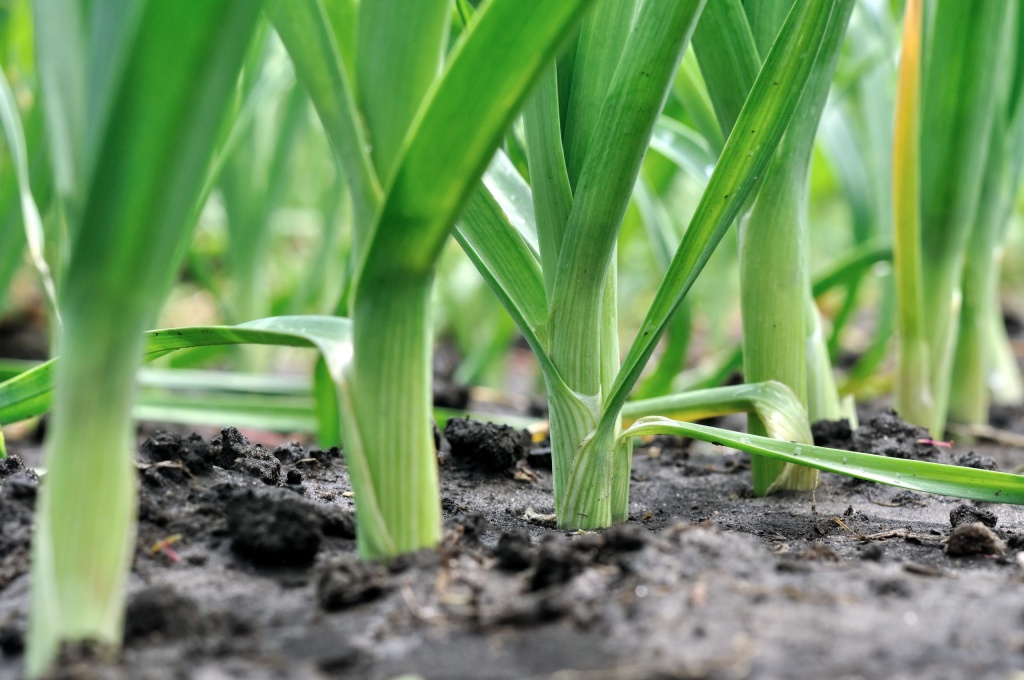Growing, harvesting and storing leeks
19.01.2022 | Onions
The leek is native to the Mediterranean and has been cultivated for over 4000 years. It is grown for its thickened, cylindrical 'stem' consisting of long leaves. Leeks are mainly used to flavour soups and casseroles as well as raw in salads. They are a good source of vitamins, minerals and fibre.
Leeks are not a preferred crop for many growers as it takes 21 to 30 weeks to reach maturity, so no more than two harvests can be grown each year. The highest yields and quality are achieved when leeks are grown in rotation with other types of vegetable.
It grows best at temperatures between 15 and 25°C. The crop is fairly frost-resistant, and in hot climates it is difficult to achieve a good harvest. Leeks grow in a variety of soils, but well-drained, neutral or slightly alkaline soils are preferred.
Planting
The main production season is from April to November, but in some areas this crop is grown all year round.
The preferred method of planting is by planting seedlings. This will ensure the exact spacing between the plants needed for even growth and the best use of the soil.
Seeds can be sown in field beds and the resulting seedlings can be thinned to 25 mm after a few weeks of emergence.
In the field, raised beds 1.5m wide can be used to improve drainage, although flat beds can be used on sandy soils. On each bed, place four rows of plants 40 cm apart. Transplanted bare-root plants are usually pruned for better rooting and planted 10-15 cm deep. Deeper planting will produce longer white stems. On sandy soils, frequent watering is required.
New varieties are mainly bred abroad by multinational breeding companies. The aim of leek breeders is to produce varieties with longer stems, smaller bulbs and darker green leaves.

Fertilisation and watering
Before planting, it is advisable to fertilise the soil with magnesium and other trace elements such as manganese, boron, copper, zinc, etc. Before planting, compost should be applied at a rate of up to 50 m3 per hectare. This will add organic matter, provide nutrients during the first weeks and help retain moisture.
Before planting, it is recommended to apply double superphosphate at a rate of 0.6 t/ha. After planting, nitrogen and potash should be added weekly to the irrigation water and 50 kg/ha of magnesium sulphate should be applied 4 weeks after planting.
If the plants show symptoms of deficiency, sprays of zinc sulphate at 4 g/l and iron chelate at 2 g/l are applied as required.
The suggested fertilisation programme is designed for poorly fertile soil. Analyse the soil and irrigation water for nutrient content before planting, this will allow you to adjust the fertilisation programme. It is important not to 'over fertilise'!
Pests and diseases
Leeks are fairly resistant to pest attacks, but onion flies and caterpillars can be a real problem. Also, thrips and snails can damage young plants if there are too many of them. Gall nematodes are not a threat.
Fusarium can certainly be a problem in continuous cultivation, so alternating crop rotations with other crops is the only way to minimise the impact of this disease.
Wet bacterial rot is sometimes a problem in the cooler months, especially on the leaves and stems below ground level. Often, physical causes, such as damage to the plant during hot weather or mechanical 'wounds' that allow the bacteria to penetrate the stem, are necessary for this disease to occur. Because of the long period from planting to harvest, good disease control is necessary.

Harvesting and storage
The crop can also be harvested mechanically. However, if the crop is to be stored for a long time, the leeks should be harvested by hand to prevent damage. Next, cut off the roots and the tops of the leaves (leaving about 10-15 cm), then rinse thoroughly to remove any soil residue.
A good quality leek has a long white stem (10 to 20 cm), a small bulb, 2 to 5 cm in diameter, weighing 200 to 300 g and with dark green leaves. Large leeks are preferred for sale. Small leeks can also be sold as "gourmet onions".
Leeks can be stored at temperatures between 0 and 2°C and a relative humidity of 90-95%. Under these conditions they can be stored for more than 90 days.
Do you want more information about storage techniques for fruits and vegetables? Visit our blog or check out the projects! And if you have any questions, please call +74952293903 or email info@agrovent.com.

